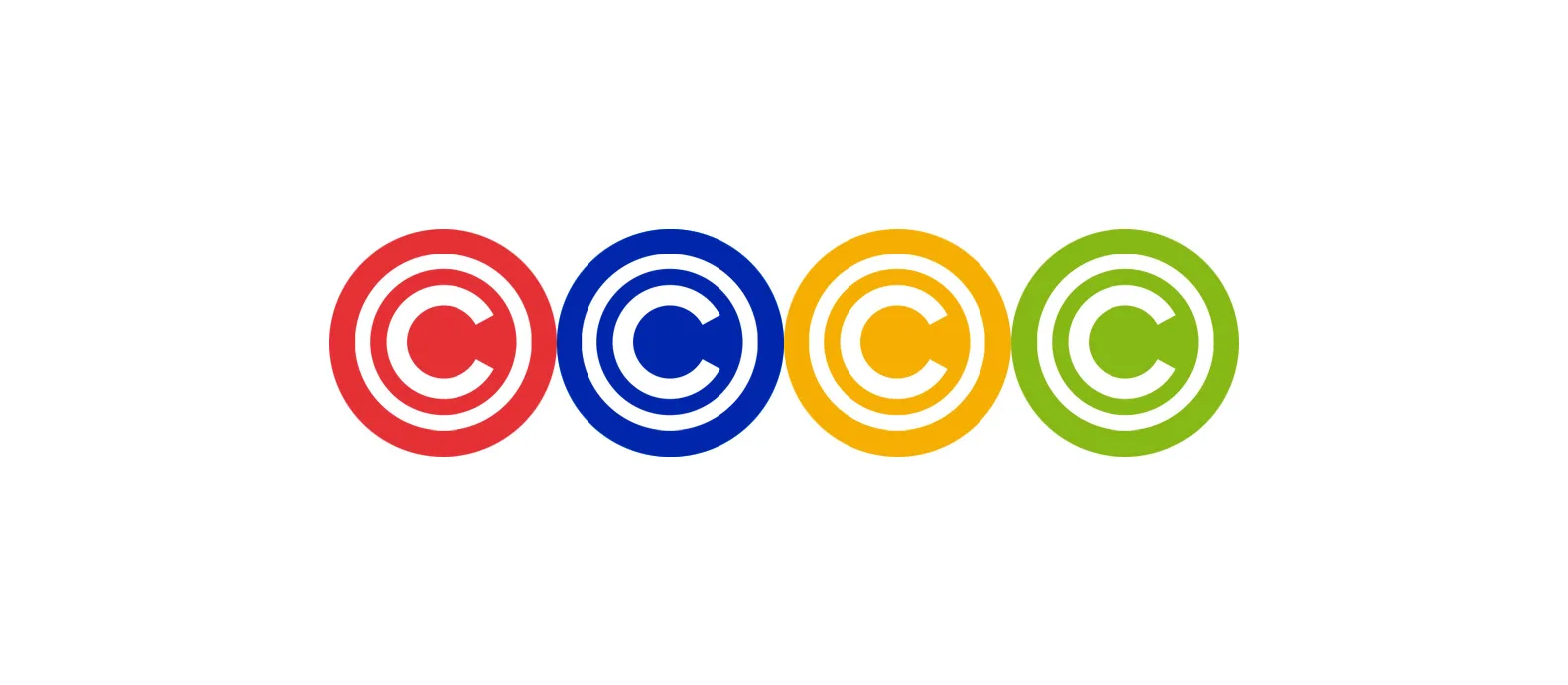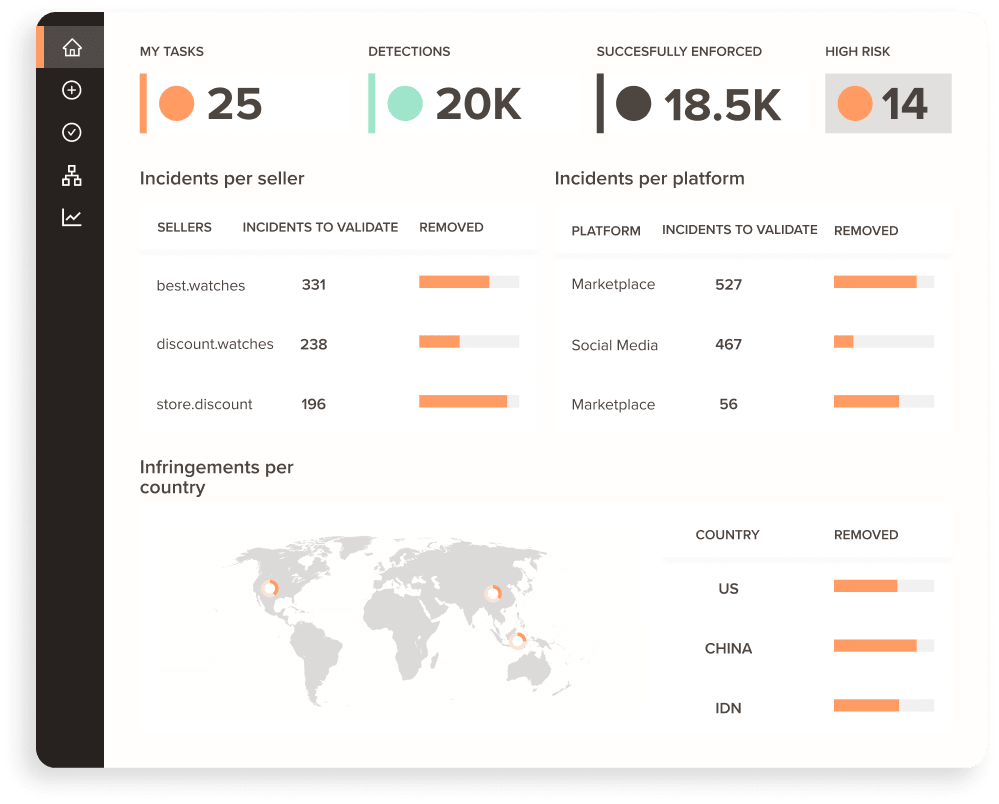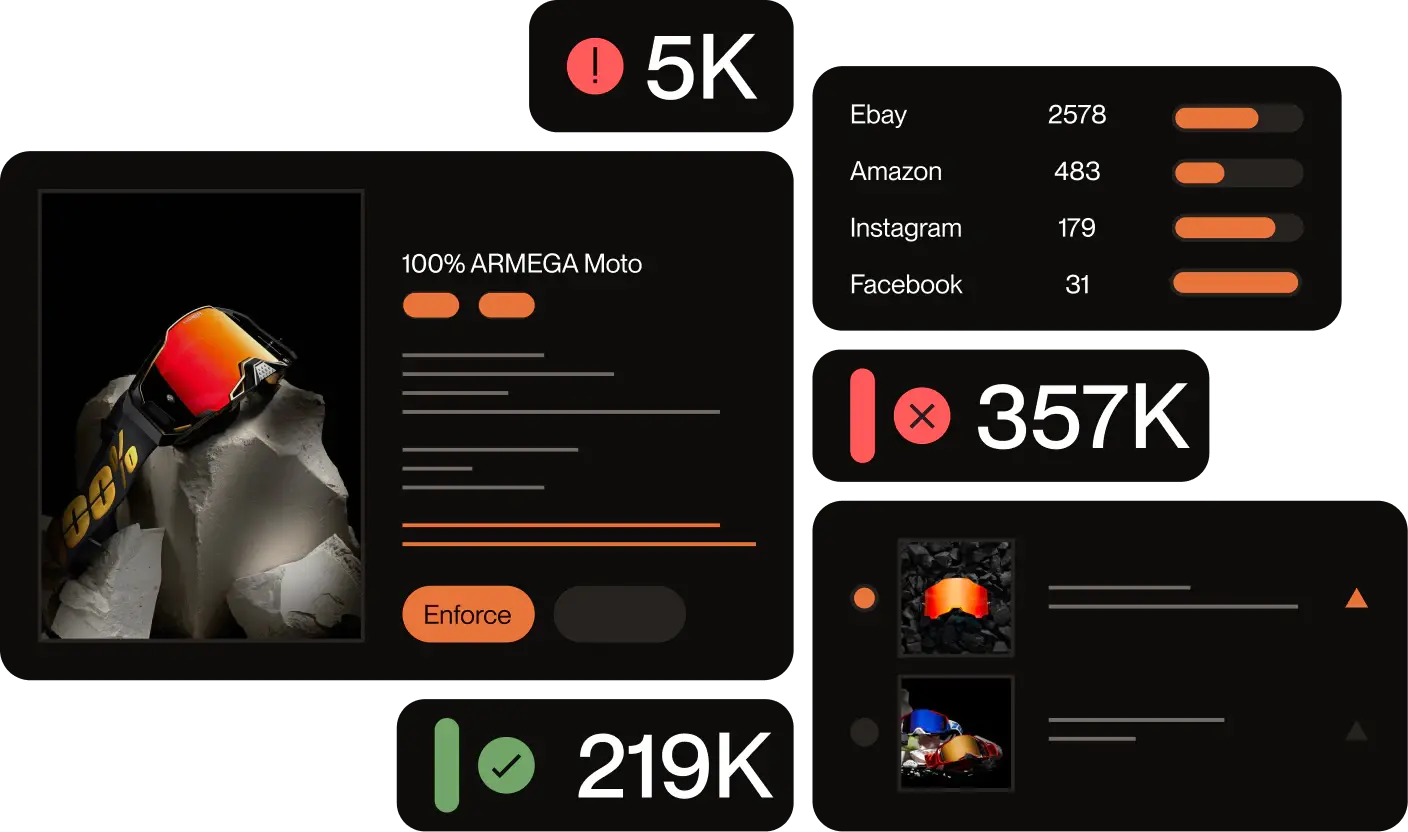As brands navigate the world of online sales, they often encounter the challenge of copyright infringements. This critical issue should not be ignored, as it not only undermines the value and integrity of a brand but also affects consumer trust.
When it comes to eBay copyright infringements, the global marketplace recognizes the significance of the issue. The good news is that eBay has established clear policies and processes to help combat unauthorized use of copyrighted material. For brands, understanding and utilizing eBay’s reporting systems is essential for protecting their intellectual property rights.
In this article, we will guide brand and copyright owners through the steps to effectively report infringements on eBay, so you can safeguard your designs and creations, and maintain your brand’s reputation in the digital marketplace.
What is eBay copyright infringement?
eBay copyright infringement is what happens when a seller on the platform uses copyrighted material without the authorization of the copyright holder. This can include anything from the unauthorized use of branded images and text, to the sale of counterfeit items that infringe on a brand’s intellectual property rights. Copyright infringement is a serious violation on eBay, as it breaches the platform’s policies, and also infringes on the legal rights of the copyright owner.
eBay is committed to ensuring that all listings comply with copyright laws to maintain a fair and trustworthy marketplace for both buyers and sellers. While eBay does take some steps to prevent the sale of counterfeit items, it’s still important for brands to address these infringements themselves. By doing this, you’ll ensure that consumers are not misled by unauthorized or counterfeit listings.
Common Types of Infringements
Brands often face several types of copyright infringements on eBay, including:
- Unauthorized use of images: Sellers may use a brand’s official product photos without permission, creating confusion among buyers and falsely implying an association with the brand.
- Misuse of text: Copying product descriptions or other copyrighted text directly from the brand’s official site or marketing materials without consent is a common infringement.
- Counterfeit items: The sale of fake goods that mimic genuine branded products is a widespread issue. These counterfeits violate copyright and trademark laws, posing a risk to consumer safety and brand reputation.
- Replica products: Listings that offer “replica” or “inspired by” items can also infringe on brand copyright, especially when they closely copy the design and aesthetic of authentic products. Find out more about the difference between fakes and replicas here.
What Is the VeRO Program?
The VeRO Program, which stands for Verified Rights Owner Program, is eBay’s initiative designed to protect intellectual property rights on its platform. The purpose of the VeRO Program is to allow both individuals and organizations who hold intellectual property rights to report listings that infringe upon those rights.
This program highlights eBay’s commitment to ensuring that the items listed for sale do not violate copyright, trademark, or other intellectual property laws. However, it’s important to note that participation in the VeRO Program requires proof of ownership of the intellectual property in question.
eBay requires rights owners or their authorized representatives to provide detailed information to substantiate their claims of ownership and justify their infringement claims. This makes sure that the program is used responsibly and that accusations of infringement are backed by legitimate rights ownership.
The purpose of the VeRO Program
The VeRO Program serves as a bridge between eBay and intellectual property owners, whether they sell on eBay or not. It provides a structured and efficient way for rights owners to report and request the removal of listings that infringe on their intellectual property. It reflects eBay’s dedication to developing a marketplace environment that respects legal rights and promotes authentic and legitimate business practices.
Who can use the VeRO Program?
The VeRO Program is specifically designed for the use of intellectual property rights owners. This includes:
- Individuals and businesses: Creators, designers, and businesses that hold copyrights, trademarks, or patents on their original works, products, or designs.
- Authorized representatives: Legal representatives or agents who are authorized to act on behalf of the rights owner.
How to report eBay copyright infringement?
Reporting eBay copyright infringement through the VeRO program is a structured process that ensures intellectual property rights are respected and protected. Here’s a step-by-step guide for brands to register and file complaints under the VeRO program:
Step 1: Join the VeRO Program
- First, brands need to register for the VeRO program by visiting eBay’s VeRO Participant page. The registration process asks brands and IP holders to provide detailed information about the rights owner and the nature of the intellectual property.
- Next, you’ll be asked to submit legal documentation that proves ownership of the intellectual property. This might include trademark certificates, copyright registrations, or patents.
Step 2: Identify Infringing Listings
- Carry out searches on eBay to find listings that potentially infringe on your intellectual property rights. Pay close attention to product images, descriptions, and any use of your brand’s trademarks.
Step 3: Complete the VeRO Report Form
- For each listing you wish to report, you’ll need to complete a VeRO Report Form. This form asks for detailed information about the infringement, including the eBay item number, a description of the intellectual property right infringed, and an explanation of the infringement.
Step 4: Submit the Report
- Submit the completed VeRO Report Form to eBay. This can typically be done via email at vero@ebay.com or copyright@ebay.com, or through eBay’s online reporting system. Check that all required fields are accurately filled out to avoid delays in processing your report.
Step 5: eBay Reviews the Report
- After your submission, eBay will review the VeRO Report Form to verify the claim. This review process involves assessing the documentation provided and the details of the reported listing.
Step 6: Take Action
- If eBay determines that the listing infringes on your intellectual property rights, the listing will be removed, and the seller will be notified of the infringement claim.
Information required to file a report
When filing a VeRO report, be prepared to provide the following information:
- Proof of Intellectual Property ownership, including legal documents that verify your ownership of the copyrighted material, trademark, or patent.
- A detailed description of the infringement; explain how the listing infringes on your intellectual property rights, including specific details about the infringing content.
- The eBay item number, which is a unique identifier for the listing you are reporting.
What happens after reporting?
After an intellectual property rights owner submits a VeRO complaint to eBay, the platform begins a series of steps to address the reported infringement. eBay’s process is designed to make sure that all parties are treated fairly while respecting the rights of the intellectual property owner.
eBay’s Investigation Process
1. Review of the complaint
eBay first reviews the VeRO complaint to check that it includes all necessary information and documentation that substantiates the claim of infringement.
2. Action on the listing
If eBay determines that the complaint is valid, the reported listing is typically removed from the platform. eBay’s priority is to ensure that its marketplace does not facilitate or promote the sale of counterfeit items.
3. Notification to the seller
The seller of the reported listing is informed about the removal and the reason behind it. This notification includes information about the VeRO program and the nature of the infringement claim.
4. Seller’s response
Sellers have the opportunity to respond to the infringement claim. If they believe the removal was in error, they can provide evidence to challenge the claim. This might include proof of authorization to use the copyrighted material or evidence that the listing does not infringe on intellectual property rights.
Possible outcomes
For the reported listings:
- If the infringement claim is upheld, the listing remains permanently removed from eBay.
- In cases where the seller successfully refutes the claim, the listing may be reinstated.
For the rights owner:
- Successful VeRO complaints result in the removal of infringing listings, helping to protect the rights owner’s intellectual property.
- If recurring infringements occur, rights owners may need to take additional steps, potentially including legal action against repeat offenders.
eBay’s role and policies
eBay acts as an intermediary in the process of removing counterfeit items. The platform’s actions are guided by its commitment to intellectual property rights, as well as the need to comply with legal standards such as those set in the Digital Millennium Copyright Act (DMCA) in the United States.
It’s important for rights owners to monitor the marketplace and continue reporting any new infringements, as eBay’s process is reactive, relying on rights owners to identify and report violations of their intellectual property.
How can eBay’s copyright infringements be reported automatically?
Automatically reporting eBay’s copyright infringements, especially on a large scale, can be a challenge for brands. So rather than trying to tackle the issue manually, many companies turn to advanced solutions like Red Points Copyright Infringement Protection solution.
This sophisticated system is designed to efficiently manage the identification and removal of counterfeit products that infringe on your intellectual property or trademarking rights. Prioritizing cost-effectiveness and efficiency, it provides a streamlined approach to tackling copyright infringements across eBay’s vast marketplace.
Red Points Copyright Infringement Protection Solution
The Red Points system utilizes cutting-edge technology to scan eBay listings, identify potential infringements based on predefined criteria set by the rights owner, and automatically file reports on their behalf.
One of the key features that set Red Points apart is its API connection with eBay. API connections are a hallmark of scalable and trusted providers, allowing for direct communication between Red Points’ system and eBay’s platform. This direct link is significant for several reasons:
Efficiency: API connections bypass traditional reporting methods like email or web forms, leading to quicker submission and processing of infringement reports.
Accuracy: By configuring specific data fields, Red Points ensures that all necessary information for a valid report is accurately delivered to eBay, which reduces the likelihood of delays due to incomplete or incorrect information being submitted.
Scalability: This automated process is particularly beneficial for brands facing large volumes of infringements, as it can handle multiple reports simultaneously, leading to broader protection with less manual intervention.
Advantages of automated reporting
The use of Red Points’ solution and its API connection with eBay offers several advantages for brands seeking to protect their intellectual property. Firstly, automating the detection and reporting process saves significant amounts of time, freeing up resources to focus on core business activities. Continuous monitoring also means that new infringements are quickly identified and reported, maintaining consistent protection for your intellectual property.
And finally, the ability to scan eBay’s extensive marketplace with precision means that even subtle infringements can be detected and addressed with ease.
What’s next
Understanding and utilizing eBay’s copyright infringement policies is key for brands aiming to protect their intellectual property in one of the world’s leading online marketplaces. Navigating these policies effectively means that your brand’s integrity is maintained, your creative works are safeguarded, and your customers are not misled by counterfeit or unauthorized products.
Being proactive in understanding eBay’s measures against copyright infringement is one important step towards leveraging these opportunities while mitigating the risks. Taking advantage of specialized solutions like Red Points’ can streamline the process of monitoring and reporting infringements. With advanced features such as API connections with eBay, this solution offers a robust, efficient, and scalable approach to copyright protection. Request a demo and discover how a tailored approach can transform your brand protection strategy on eBay.








